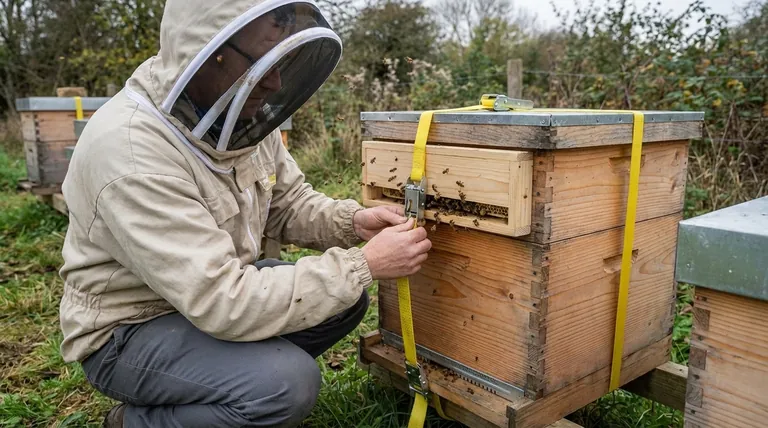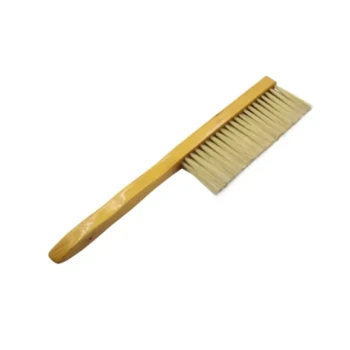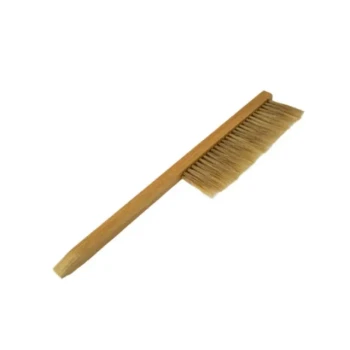To properly install a pollen trap, you must first seal all other potential hive entrances to ensure bees are forced to use the trap. The installation should be done on a cooler day to minimize hive stress and overheating. Be prepared for an adjustment period, as it can take anywhere from a few hours to several days for the colony to fully adapt to the new entrance.
A pollen trap is more than just a piece of hardware; it's a significant intervention in the life of the colony. Successful and responsible pollen harvesting depends less on the initial installation and more on understanding its impact on hive health, proper timing, and diligent post-harvest management.

Preparing the Hive for Installation
Proper preparation is critical to minimize stress on the bees and ensure the trap functions as intended. Rushing this stage can lead to an overheated hive and a disoriented, unproductive colony.
Seal All Alternative Entrances
For a pollen trap to be effective, it must be the only way in or out of the hive. Before installation, thoroughly inspect your hive bodies, bottom board, and covers for any cracks or holes the bees might use as an alternative entrance. Seal these completely.
Choose the Right Installation Day
Install the trap on a cool, overcast day or late in the evening. Introducing a new, constricted entrance during the heat of a sunny day can cause severe congestion and overheating as foragers try to get in and out. A cooler temperature reduces this immediate stress.
Pre-Orient Bees for Top-Mounted Traps
If you are using a top-entrance trap, you must get the bees accustomed to that location before adding the stripping mechanism. Install the new top entrance without the trap active for one to two weeks, allowing the colony to establish it as their primary flight path.
The Installation and Adjustment Period
Once the trap is on, the bees will need time to figure it out. Your role is to monitor them and ensure the transition goes smoothly.
Expect Initial Confusion
Foragers will return to the hive and be completely disoriented by the new obstacle. You will see a cloud of confused bees at the entrance, searching for the old opening. This is normal and will subside as they discover the new path.
Monitor Bee Traffic
Watch the entrance closely for the first few hours. Look for signs of excessive congestion or "bearding" on the front of the hive, which could indicate an overheating problem. Ensure that bees are successfully making their way through the trap after the initial confusion.
Allow for Adaptation
The time it takes for a colony to adapt varies. Some colonies figure it out within hours, while others may take a few days. Resist the urge to intervene unless you see clear signs of severe distress.
Understanding the Trade-offs and Risks
A pollen trap directly impacts the colony's ability to function. Understanding these risks is the key to responsible beekeeping.
Only Trap from Strong Colonies
Pollen is the bee's primary source of protein, essential for raising brood. A pollen trap diverts a significant portion of this resource. Never install one on a weak or developing colony, as you will be starving them of the food they need to grow.
Limit the Trapping Duration
Prolonged trapping can severely stress a colony by depriving it of necessary protein. The trap should only be used during a heavy pollen flow and for limited periods, such as a few weeks at most. Some beekeepers practice intermittent trapping—on for a few days, off for a few days—to allow the colony to replenish its own stores.
Manage Your Harvest Diligently
Trapped pollen is fragile and highly perishable. It must be collected daily to prevent mold, decay, and contamination from hive pests. As soon as it's collected, it must be frozen or dried immediately to preserve its quality.
A Responsible Pollen Trapping Strategy
Your approach should always prioritize the long-term health of your bees over the short-term gain of a pollen harvest.
- If your primary focus is colony health: Use the trap intermittently for only a few weeks during a peak pollen flow, giving the bees ample time to gather resources for themselves.
- If your primary focus is a high-quality harvest: Commit to collecting the pollen every single day and freezing or dehydrating it immediately to prevent spoilage.
- If you are new to this process: Start with your strongest hive and monitor it daily for signs of stress, such as a decline in brood production or unusual defensiveness.
Successful pollen trapping is an act of careful partnership with your bees, not just a simple harvest.
Summary Table:
| Key Consideration | Key Action | Why It Matters |
|---|---|---|
| Hive Preparation | Seal all alternative entrances. | Forces bees to use the trap, making it effective. |
| Timing | Install on a cool, overcast day or in the evening. | Minimizes hive stress and prevents overheating. |
| Colony Strength | Only install on strong, established colonies. | Prevents starvation of weak hives that need pollen for brood. |
| Harvest Management | Collect pollen daily and freeze/dry immediately. | Prevents spoilage, mold, and pest contamination. |
| Trapping Duration | Limit use to a few weeks during heavy pollen flow. | Avoids long-term protein deprivation and colony stress. |
Ready to equip your apiary with reliable, high-quality pollen traps? As a trusted wholesale supplier to commercial apiaries and beekeeping equipment distributors, HONESTBEE provides the durable supplies you need for a successful and responsible harvest. Our equipment is designed for efficiency and minimal hive disruption. Let's discuss how we can support your operation's growth—contact our team today for wholesale pricing and expert advice!
Visual Guide

Related Products
- Professional Galvanized Hive Strap with Secure Locking Buckle for Beekeeping
- Professional Dual-End Stainless Steel Hive Tool for Beekeeping
- HONESTBEE Advanced Ergonomic Stainless Steel Hive Tool for Beekeeping
- Professional 3-Bar Frame Grip with Integrated Hive Tool
- Wooden Bee Brush with Triple Row Artificial Fiber for Beekeeping
People Also Ask
- Why are hive straps important for beekeepers? Secure Your Hives Against Wind, Predators & Transport
- What maintenance is required for hive straps? A Guide to Cam Buckle vs. Ratchet Strap Care
- What is the best length for straps used around beehives? Why 12 Feet is the Industry Standard
- Can straps with hook ends be used for beehives? A Guide to Secure Hive Management
- How should a cam buckle strap be installed for optimal performance? Master the Leverage for Maximum Tension



















